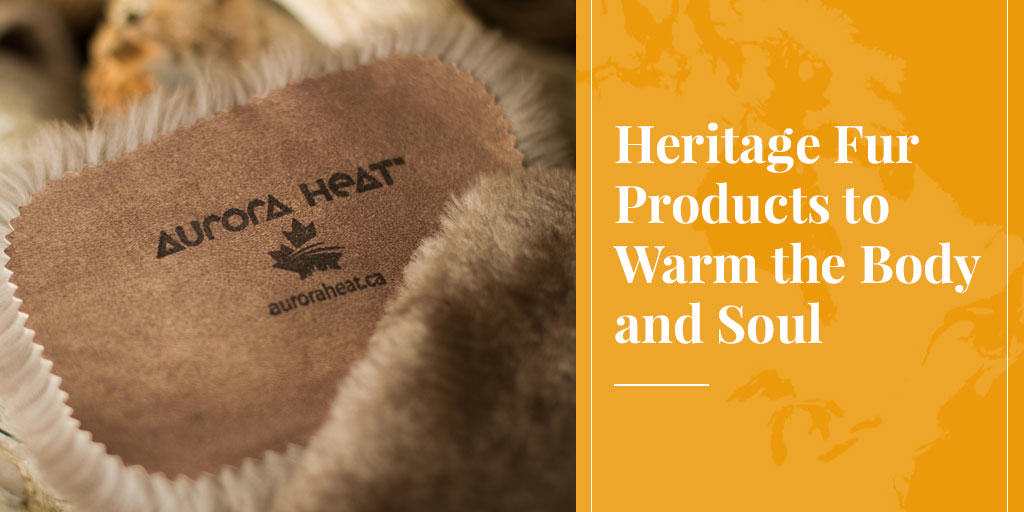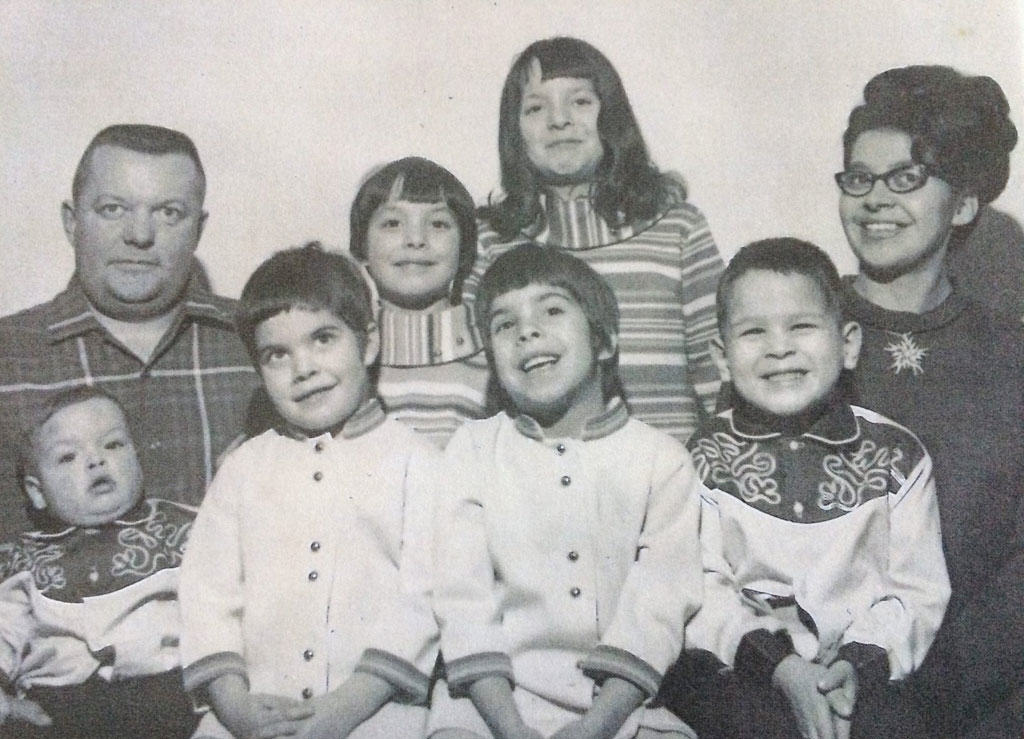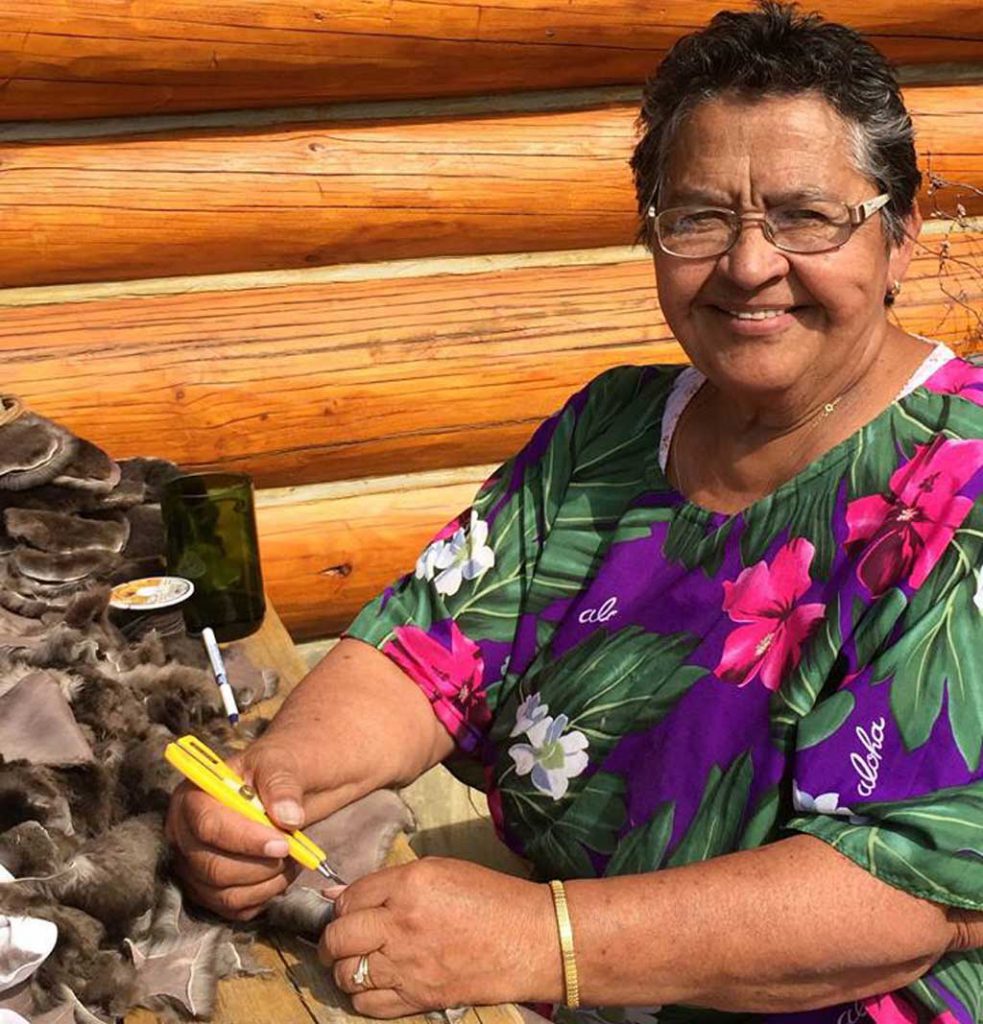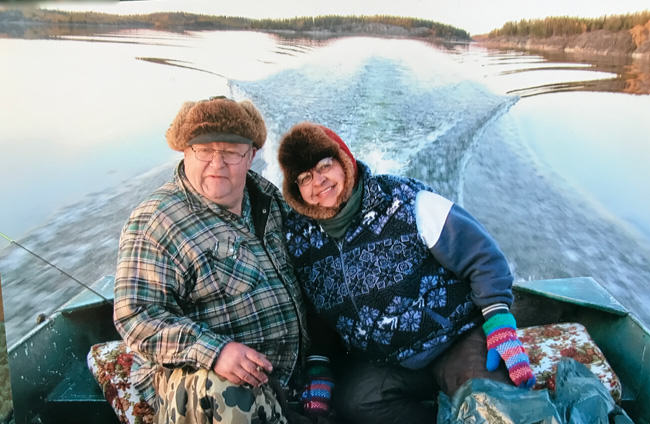
Sometimes a particular aroma can bring back vivid childhood memories leaving you awash in feelings of love, comfort, and belonging. It may be cinnamon buns or fresh laundry for some. For me it is the smells of hides and fur. Wild fur is a part of my family heritage.
My father came from a line of French Canadians who trapped fur bearers in northern Alberta, including the beavers and muskrats of the Athabasca Delta. At 19, he moved to Fort Smith, Northwest Territories and continued to trap on the Alberta side of the border. At the age of 23, he married my mother, who shared his life for 56 years – his perfect match.
My mother is a Chipewyan Dene from Northern Saskatchewan. She moved to Fort Smith as a young teenager. Having left her home community early, she’d had little opportunity to learn the traditional skills of her people. As the young wife of a trapper, she instinctively turned to the elders of her new community for their knowledge and experience. Chipewyan was the language spoken, and I remember their happy faces and the sounds of laughter when it was my job to bring tea as they worked preparing meat, or skinning and fleshing beaver and muskrat.

When my father’s trapping partner was forced to retire because of health problems, I remember being proud of my mother when she convinced my dad that she was the one who should take up the job. She was excited and eager, and I still remember her delight in making a very special lynx-fur hat – a hat befitting a lady trapper.
It was the trapper’s way of life that defined my parents. It gave them an intimate connection with the natural world. They were hard-working people. After a long day on the trap-line, my father would head downstairs to tend to the raw furs while mom sewed late into the evening. She became a well-respected and expert sewer of fur and hides. My parents kept our large family well fed with healthy wild meat and dressed in the warmest of furs. The six “little Dragons” were northern kids who didn’t know the meaning of cold!
They often shared colourful stories about their days together on the trap-line, like the times the wolves out-smarted them, or the afternoon dad went out for a couple hours and came back with four beautiful lynx. The trap-line always brought new adventures for more stories. My parents were also keenly aware of the health and numbers of animals in their territory, and they managed these populations much as a rancher would.

When my father passed away a few years ago, I thought a lot about my parents’ remarkable life together, the trap-line, and the barrels of fur he left behind that my mom continues to sew with to this day. I wished for a way to carry on the family tradition.
It was about this time that I moved back to the North. My son, Joel, who had been enjoying snowboarding in the mountains of British Columbia, was now outside every day in -40 weather. I was continually adding fur to the inside of clothing, for both him and his buddies, as my mother had done for us. I was reminded of how effective an insulator fur is as I watched them out in the frigid temperatures for hours. I soon found myself cutting little pieces of fur into squares and gifting them to friends as hand-warmers they could slip inside their mitts.
My ah-ha moment came when, after a while, those cozy warmers had my friends asking for more. I realized that this gift from nature could be shared with more people. Not knowing anything about business or developing a retail product, I began taking steps into that world. I chose sheared beaver primarily from the Genuine Mackenzie Valley Fur Program and went on to develop branding, packaging, and marketing strategies.
Encouragement and sage advice came from my mother, as well as from those who purchased and loved those first Aurora Heat™ hand and foot warmers. Soon I began to hear from people with circulatory problems and arthritis about how my fur warmers were making a difference for them. We celebrated the first anniversary of Aurora Heat in March, and it is now available on-line and in stores across the North and beyond.

Am I excited? You bet I am! I love everything about my new fur business. I love continuing my family heritage and traditions, sharing my mother’s Indigenous culture and ancestral knowledge of thousands of years, and celebrating my parents’ love of the land. I love that I am part of a way of life that continues to thrive in Canada with our cold winters and open-minded people.
I especially love being part of the societal awakening of our need for natural and sustainable products. I love the beauty and the usefulness of fur. There is something about having a piece of nature in your mitten, socks or pocket that is incredibly grounding. We can’t all afford a beautiful fur coat, but anyone can own a pair of reusable, all-natural fur hand or foot warmers to keep fingers and toes toasty-warm year after year.
My vision for Aurora Heat is to offer more people an opportunity to experience the warmth and comfort of natural fur, and look forward to developing more products. I truly believe that if we rely more on nature for our needs, we will come closer to living in harmony with this earth. And, I know my father would have just the biggest grin!
May the fur be with you!
***
SEE ALSO: Hudson’s Bay Company stocks Fort Smith line of fur hand warmers. CBC News, March 9, 2019.
Visit Aurora Heat’s website or follow it on Facebook. Email Brenda at [email protected].











Very cool, Brenda! Congrats!
Thank you, Jane.